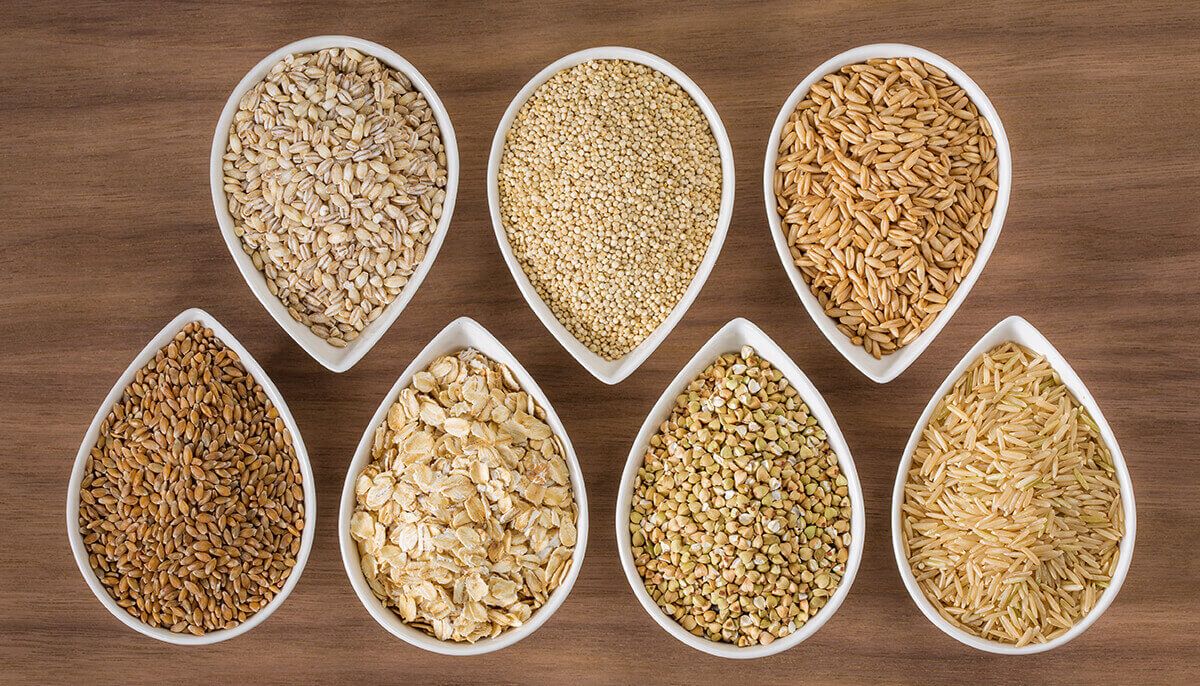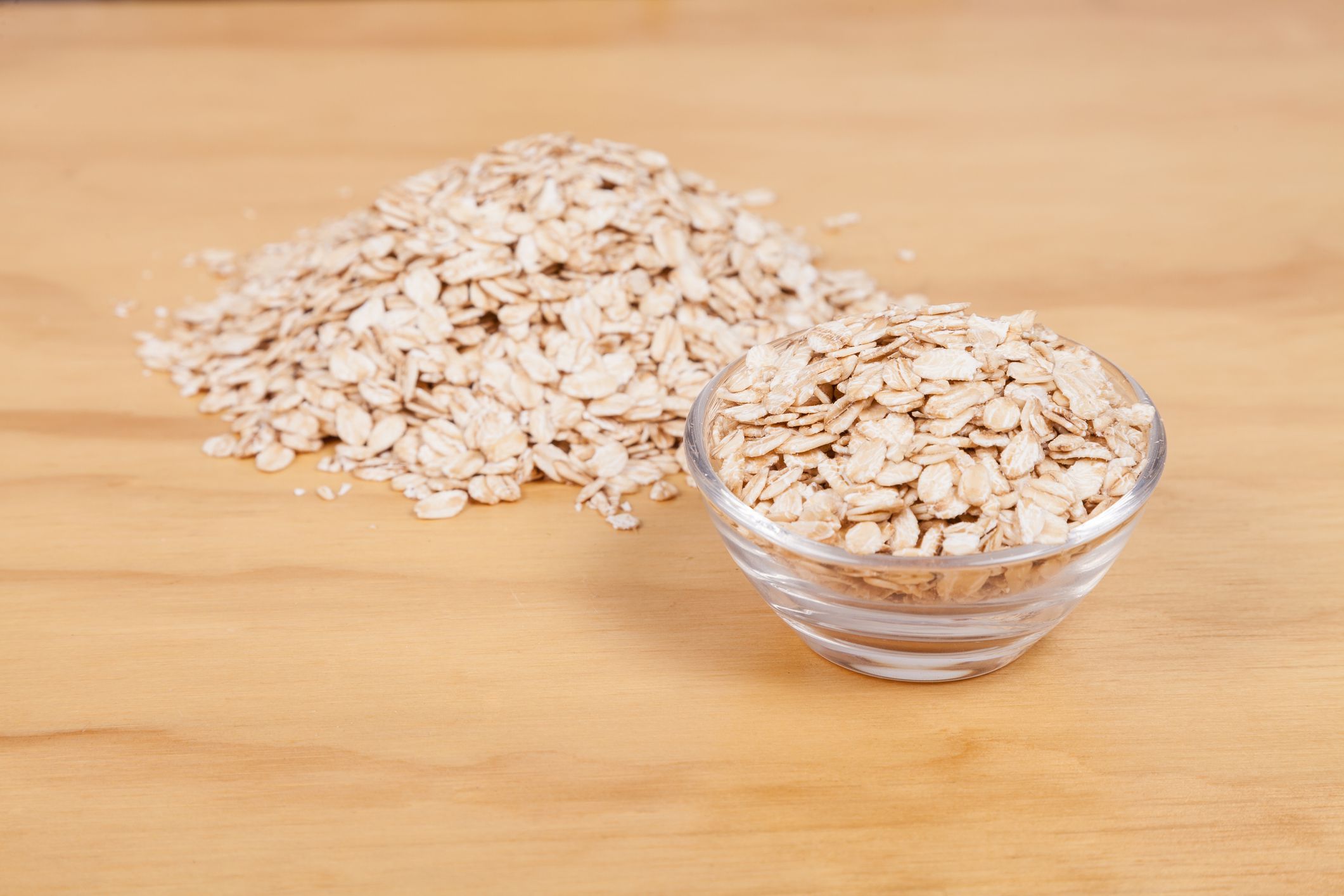

Articles
How To Store Grain
Modified: January 9, 2024
Discover effective methods and expert tips for storing grain in this informative collection of articles. Ensure the quality and longevity of your grain with proper storage techniques.
(Many of the links in this article redirect to a specific reviewed product. Your purchase of these products through affiliate links helps to generate commission for Storables.com, at no extra cost. Learn more)
Introduction
Grain storage is a crucial aspect of ensuring the quality and longevity of harvested grains. Whether you are an avid home gardener, a small-scale farmer, or a large commercial producer, proper grain storage is essential for preserving the nutritional value and preventing spoilage of your precious grains.
In this article, we will delve into the various factors involved in storing grain effectively. We will explore the different types of grain, suitable storage containers, and the necessary steps to prepare the grain for storage. Additionally, we will discuss techniques for controlling moisture levels, managing temperature, preventing pests, conducting regular inspections, and using storage accessories. By following these guidelines, you can optimize the storage conditions and ensure the long-term viability of your grain.
Let’s dive into the world of grain storage and discover the strategies and techniques that will help you achieve optimal results.
Key Takeaways:
- Proper grain storage involves understanding different grain types, selecting suitable containers, controlling moisture and temperature, preventing pests, and conducting regular inspections to ensure long-term viability and quality.
- Implementing effective grain storage techniques, utilizing accessories, and maintaining vigilance in monitoring and adjustments are crucial for preserving the nutritional integrity and longevity of stored grains.
Read more: How To Store Store-Bought Bread
Understanding the Types of Grain
Before diving into the intricacies of grain storage, it is essential to have a basic understanding of the different types of grain. Common types of grain include corn, wheat, rice, barley, oats, and sorghum. Each type of grain has its own unique characteristics, including size, moisture content, and storage requirements.
For example, corn is a large and starchy grain that is commonly used for animal feed and industrial purposes. It has a higher moisture content compared to other grains and requires specific conditions for proper storage to prevent mold and mycotoxin growth.
On the other hand, wheat is a smaller grain used primarily for human consumption. It has a lower moisture content and requires a well-ventilated storage environment to prevent insect infestation and maintain its quality.
Rice, another popular grain, requires specific humidity levels to prevent the growth of mold and maintain its texture and taste. Barley and oats, commonly used in brewing and livestock feed, have their own unique storage requirements.
Understanding the specific characteristics and storage needs of each type of grain is crucial for effective grain storage. It allows you to tailor your storage methods to maintain optimum freshness, preventing spoilage and preserving the nutritional value of the grains.
When storing different types of grain together, it is important to consider the compatibility of the grains, as some may emit ethylene gas or have different moisture requirements that can affect the quality of neighboring grains.
In the next section, we will discuss how to select the right storage containers for your grains, taking into consideration factors such as size, material, and functionality.
Selecting the Right Storage Containers
Choosing the appropriate storage containers is crucial for maintaining the quality and longevity of your grains. The right containers will protect the grains from moisture, pests, and external factors that could compromise their integrity. Here are some factors to consider when selecting storage containers:
- Material: Opt for containers made of food-grade materials such as plastic, metal, or glass. These materials are durable, non-reactive, and resistant to moisture and pests.
- Size: Consider the quantity of grains you need to store and choose containers that provide enough space. Avoid filling containers to the brim, as grains need some room for air circulation.
- Airtightness: Select containers with airtight seals to prevent moisture and pests from entering. This will help maintain the quality and freshness of the grains.
- Transparency: Opt for transparent containers that allow you to easily monitor the condition of the grains without opening the containers. This helps in identifying any pest infestation or moisture-related issues.
- Stackability: If you have limited storage space, consider containers that are stackable to optimize space utilization. This ensures efficient storage while maintaining accessibility.
Additionally, consider using specialized containers designed specifically for grain storage, such as grain bins or silos. These containers offer controlled ventilation and are suitable for storing larger quantities of grains.
Before using any containers, ensure they are clean and free from any contaminants. Wash them with mild detergent and rinse thoroughly to remove any residue. This prevents unwanted odors or substances from affecting the quality of your grains.
Once you have selected the right storage containers, the next step is to prepare the grains for storage. In the following section, we will discuss the necessary steps to ensure your grains are in optimal condition before being stored.
Preparing the Grain for Storage
Properly preparing your grains before storage is crucial to maintain their quality and prevent the growth of molds, pests, and other contaminants. Here are some essential steps to follow when preparing your grain:
- Cleaning: Thoroughly clean the grains to remove any debris, chaff, or foreign materials. Use a grain cleaner or sieve to separate the grains from unwanted particles. This helps prevent deterioration and keeps the grains in optimal condition.
- Drying: Ensure that the grains are properly dried before storage. Moisture content is a critical factor that can lead to spoilage and the growth of molds and fungi. Use a moisture meter to measure the moisture content of the grains and ensure it falls within the recommended range for each grain type.
- Storage Bags: If using storage bags, ensure they are made of breathable materials that allow proper air circulation. Avoid using plastic bags or containers that can trap moisture and promote the growth of mold and mildew.
- Sealing: Seal the storage containers or bags tightly to prevent moisture, pests, and rodents from entering. Airtight seals help maintain the quality and integrity of the grains, preventing spoilage.
- Labeling: Clearly label each storage container or bag with the type of grain, harvest date, and any other relevant information. This makes it easier to identify and track the grains, especially if storing different types of grains together.
It is important to note that different types of grains may require specific treatment before storage. Some grains may benefit from treatments such as fumigation or applying food-grade diatomaceous earth to control pests. Research the specific requirements for the grains you are storing to ensure proper preparation.
Once the grains are cleaned, dried, and properly packed, the next step is to maintain appropriate moisture levels in the storage environment. In the next section, we will discuss strategies for controlling moisture levels to prevent spoilage and maintain grain quality.
Controlling Moisture Levels
Maintaining proper moisture levels is crucial for grain storage as excessive moisture can lead to mold growth, spoilage, and a decrease in grain quality. Conversely, if the grains are too dry, they can become brittle and susceptible to damage. Here are some strategies to control moisture levels:
- Monitoring: Regularly monitor the moisture content of your grains using a moisture meter. Different types of grains have different recommended moisture levels for storage. Ensure that the moisture content remains within the specified range to prevent spoilage.
- Absorbents: Use moisture-absorbing materials such as silica gel packs or desiccants inside the storage containers or bags. These absorbents help reduce moisture levels and prevent the growth of mold and mildew.
- Ventilation: Provide proper ventilation in the storage area to maintain airflow and prevent condensation. This can be achieved by using fans or ensuring there are adequate openings for air circulation.
- Temperature Control: Maintain a consistent temperature within the storage area. Fluctuations in temperature can cause the grains to sweat, leading to an increase in moisture levels. Use temperature control methods such as insulation or air conditioning to keep the storage area at a stable temperature.
- Keep Away from Moisture Sources: Store your grains away from sources of moisture such as leaking pipes, damp walls, or areas prone to water seepage. These can contaminate the grains and increase moisture levels.
- Regular Inspection: Periodically inspect the stored grains for any signs of moisture build-up or mold growth. If any issues are detected, take immediate action to rectify the problem and prevent further damage.
By implementing these strategies, you can effectively control moisture levels and minimize the risk of spoilage. However, it is important to continuously monitor and adjust as needed, especially during changes in weather or environmental conditions.
In the next section, we will explore the importance of managing temperature for long-term grain storage and discuss the techniques to ensure optimal storage conditions.
Read more: How To Store A Bagel
Managing Temperature for Long-Term Storage
The temperature at which grains are stored plays a vital role in maintaining their quality and preventing the growth of pests and molds. Proper temperature management is especially crucial for long-term storage. Here are some key techniques for managing temperature:
- Cool Storage: Keep the storage area cool, ideally between 40°F (4°C) and 60°F (15°C). This temperature range helps slow down the growth of pests, fungi, and molds, prolonging the shelf life of the grains.
- Avoid Extreme Temperatures: Avoid storing grains in areas with extreme temperatures, as this can lead to thermal stress and reduce grain quality. Excessive heat can promote the growth of insects and accelerate spoilage.
- Air Circulation: Ensure proper air circulation in the storage area to prevent the formation of hot spots. Hot spots can occur due to poor ventilation, leading to the accumulation of moisture and increased risk of mold growth. Use fans or ventilation systems to maintain consistent airflow.
- Insulation: Insulate the storage area to minimize temperature fluctuations caused by external factors. Proper insulation helps maintain a stable temperature, reducing the risk of condensation and moisture build-up.
- Monitor Temperature: Regularly monitor the temperature inside the storage area using thermometers. This allows you to identify any fluctuations and take necessary measures to adjust the environment for optimal storage conditions.
- Consider Climate: Take into account the climate of your region when choosing a storage location. If you live in an area with high humidity or extreme temperatures, additional measures may be necessary, such as using air conditioning or dehumidifiers.
Remember, maintaining a consistent and appropriate temperature is crucial to ensure the longevity and quality of stored grains. Be proactive in monitoring and adjusting the storage conditions as needed to prevent damage and spoilage.
In the next section, we will explore techniques for preventing pests and implementing effective pest control measures to safeguard your grains.
Store grain in a cool, dry place to prevent mold and insect infestations. Use airtight containers or bags to keep out moisture and pests. Rotate stock regularly to ensure freshness.
Pest Prevention and Control
Pests pose a significant threat to stored grains as they can cause damage, contaminate the grains, and lead to substantial financial losses. Implementing effective pest prevention and control measures is crucial for ensuring the quality and integrity of your grains. Here are some strategies to prevent and control pests:
- Proper Storage Containers: Use sealed and airtight storage containers to prevent pests from entering. Make sure there are no gaps or openings that would allow insects or rodents to access the grains.
- Clean and Sanitized Storage Area: Ensure that the storage area is clean, free from food debris, and properly sanitized before storing grains. Regularly sweep and vacuum to remove any spilled grains, as well as any cracks or crevices that may harbor pests.
- Inspect Incoming Grains: Thoroughly inspect grains before storage to detect any signs of infestation. Look for any live or dead insects, webbing, or grain damage. If infested grains are detected, isolate and treat them separately to prevent further spread.
- Pest Traps: Place sticky traps or pheromone traps around the storage area to monitor and capture pests. These traps can help detect the presence of pests early on and indicate the need for further action.
- Regular Monitoring: Regularly inspect the stored grains for any signs of pest activity. Look for droppings, webbing, or live insects. Promptly take action if pests are detected.
- Natural Predators: Consider introducing natural predators of grain pests, such as parasitic wasps or predatory beetles, into the storage area. These beneficial insects can help control pest populations naturally.
- Chemical Treatments: If necessary, consider using approved insecticides or pesticides to control pests. Follow the manufacturer’s instructions carefully and ensure that the products used are suitable for grain storage.
- Regular Cleaning and Rotation: Clean the storage containers or bags regularly to remove any residue or spilled grains that can attract pests. Additionally, practice proper rotation of grains to prevent the buildup of pests in the storage area.
By employing these preventative measures and implementing effective pest control strategies, you can significantly reduce the risk of pest infestations and protect your stored grains.
In the next section, we will discuss the importance of regular inspection and maintenance of your grain storage system to identify any issues and ensure the ongoing integrity of your grains.
Regular Inspection and Maintenance
Regular inspection and maintenance of your grain storage system are vital for identifying any potential issues and ensuring the ongoing integrity of your grains. By conducting routine checks and addressing maintenance tasks, you can prevent spoilage, reduce the risk of pests, and maintain the quality of your stored grains. Here are some key steps to follow for regular inspection and maintenance:
- Visual Inspection: Visually inspect the storage area and containers regularly. Look for any signs of damage, such as cracks, leaks, or wear and tear. Inspect the seals, lids, and doors to ensure they are intact and properly functioning.
- Check for Pests: Look for any signs of pest activity, such as droppings, webbing, or live insects. Inspect storage containers for any holes or openings that pests could enter through. If pests are detected, take immediate action to address the issue.
- Inspect Seals and Latches: Check the seals and latches on your storage containers to ensure they are tight and secure. Loose or damaged seals can allow moisture and pests to enter, compromising the quality of the grains.
- Monitor Temperature and Moisture: Regularly monitor the temperature and moisture levels inside the storage area. Ensure that they remain within the recommended ranges for the specific grains being stored. Adjust ventilation or moisture control measures as needed.
- Clean and Sanitize: Regularly clean the storage containers and the surrounding area. Remove any spilled grains, debris, or residue that can attract pests or cause moisture buildup. Sanitize surfaces to eliminate any potential contaminants.
- Address Maintenance Issues: Fix any maintenance issues promptly. Repair any damages, replace broken seals or latches, and address any structural issues in the storage area. Regular maintenance ensures that the storage system remains in good working condition.
- Record Keeping: Keep a record of your inspections and maintenance tasks. Note any findings, actions taken, and any improvements or changes implemented. This documentation will help you track the condition of your storage system and identify recurring issues.
By incorporating regular inspection and maintenance into your grain storage routine, you can detect and address any issues early on, ensuring the continued effectiveness of your storage system and the quality of your stored grains.
In the next section, we will explore the importance of labeling and organization in grain storage and how it can help streamline the retrieval process and maintain grain quality.
Labeling and Organization
Labeling and organization are essential aspects of grain storage that can help streamline the retrieval process and maintain the quality of your stored grains. Proper labeling and organization allow for easy identification, inventory management, and efficient utilization of your grain stock. Here are some key tips for effective labeling and organization:
- Clear and Visible Labels: Clearly label each storage container or bag with important information such as the type of grain, harvest date, and any specific notes or instructions. Use waterproof and fade-resistant labels to ensure they remain legible throughout the storage period.
- Consistent Labeling System: Establish a consistent labeling system to easily identify and track your stored grains. This can include using color-coded labels or numerical codes for different grain types or storage locations.
- Inventory Management: Keep an inventory log or spreadsheet to track the quantity and status of each grain variety. Update the inventory regularly, noting any additions or removals from storage.
- Organize by Grain Type and Date: Group and organize your stored grains by grain type, ensuring that similar grains are stored together. Arrange them in a logical order based on the harvest or storage dates. This organization makes it easier to locate specific grains when needed.
- Aisles and Pathways: Create clear aisles and pathways within the storage area to allow easy access to each storage container. This prevents damage to the grains and facilitates efficient inspection or retrieval.
- Rotation System: Implement a rotation system to ensure that older grains are used or sold first. This prevents the risk of spoilage and reduces waste.
- Regular Checkups: Periodically review your labeling and organization system to ensure it remains accurate and up to date. Make any necessary adjustments or updates based on changes in grain inventory or storage requirements.
By implementing effective labeling and organization practices, you can maximize the efficiency of your grain storage system, minimize the risk of errors, and maintain the quality and integrity of your stored grains.
In the next section, we will discuss the use of grain storage accessories that can further enhance the conditions and preservation of your stored grains.
Read more: How To Store Granola
Using Grain Storage Accessories
Grain storage accessories are tools and equipment that can enhance the conditions and preservation of your stored grains. These accessories can provide additional protection against pests, moisture, and temperature fluctuations, ensuring the longevity and quality of your grains. Here are some commonly used grain storage accessories:
- Grain Probes: Grain probes are used to collect samples from different parts of the grain storage. They help assess the moisture levels, temperature, and overall condition of the grains. Regularly sampling the grains using grain probes allows you to monitor and take necessary actions to maintain grain quality.
- Aeration Systems: Aeration systems provide controlled airflow within the storage containers or bins. They help regulate temperature and moisture, reducing the risk of grain spoilage. Aeration fans and ducts distribute air evenly throughout the grains, preventing the formation of hotspots and mold growth.
- Gas-Tight Storage Bags: Gas-tight storage bags are specially designed to create an airtight environment for storing grains. These bags are made of multi-layered materials that prevent oxygen and moisture from entering. They can be used to store grains in bulk and offer an effective barrier against pests and external factors.
- Grain Dryers: Grain dryers are equipment used to reduce the moisture content of harvested grains. These devices utilize heated air and airflow to facilitate the drying process. Properly drying grains before storage is essential to prevent mold growth and maintain grain quality.
- Insect-Repellent Liners: Insect-repellent liners are placed inside storage containers or bins to deter pests. These liners are treated with insecticides or natural repellents that create a barrier against pest infestation. They help protect the grains from insects and extend the storage life of the grains.
- Silos and Grain Bins: Silos and grain bins are large-scale storage structures designed for bulk grain storage. They provide ample storage capacity and often come equipped with ventilation systems and temperature monitoring devices. Silos and grain bins are suitable for commercial grain storage operations.
When utilizing grain storage accessories, it is important to follow the manufacturer’s instructions, conduct regular maintenance checks, and ensure proper installation. By integrating these accessories into your grain storage system, you can enhance the storage conditions, protect against pests and spoilage, and preserve the quality of your grains.
With the knowledge of grain storage techniques, from understanding the types of grain to implementing storage accessories, you are now well-equipped to store your grains effectively. By taking the necessary steps to control moisture and temperature, prevent pests, conduct regular inspections, and utilize appropriate storage containers and accessories, you can ensure the long-term viability and quality of your stored grains.
Remember, maintaining grain storage is an ongoing process, requiring continuous monitoring and adjustments as needed. By staying proactive and attentive to your grain storage needs, you can safeguard your investment, maximize your grain’s value, and preserve its nutritional integrity.
Now, go forth and implement these grain storage techniques to maintain the quality and freshness of your valuable grains!
Conclusion
Effective grain storage is essential for maintaining the quality, nutritional value, and longevity of harvested grains. By understanding the types of grain, selecting the right storage containers, and properly preparing the grains for storage, you can set a strong foundation for preserving their integrity.
Controlling moisture levels and managing temperature are critical factors in preventing spoilage and maintaining grain quality over the long term. Implementing pest prevention and control measures, conducting regular inspections and maintenance, and labeling and organizing your stored grains further ensure a smooth and efficient storage system.
Additionally, utilizing grain storage accessories such as grain probes, aeration systems, gas-tight storage bags, and insect-repellent liners can aid in enhancing storage conditions and protecting against external factors that could compromise grain quality.
Remember that grain storage is an ongoing process, and it requires regular monitoring, adjustments, and maintenance. Stay vigilant in checking for pests, controlling moisture and temperature, and maintaining a well-organized storage area to maximize the longevity and quality of your stored grains.
By implementing the techniques discussed in this article, you can ensure that your grains remain fresh, free from pests, and in optimal condition, whether you are a small-scale farmer or a large commercial producer.
So, take the necessary steps to store your grains effectively, and enjoy the satisfaction of knowing that your hard-earned harvest is well-preserved and ready to provide nourishment and sustenance for you and others.
Happy grain storage, and best of luck with your future endeavors!
Frequently Asked Questions about How To Store Grain
Was this page helpful?
At Storables.com, we guarantee accurate and reliable information. Our content, validated by Expert Board Contributors, is crafted following stringent Editorial Policies. We're committed to providing you with well-researched, expert-backed insights for all your informational needs.














0 thoughts on “How To Store Grain”